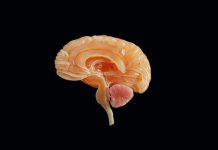
Alzheimer’s disease, a debilitating neurodegenerative condition that impacts millions globally, might soon be better managed thanks to new research out of Fudan University in Shanghai.
The focus of this pioneering study is an ion channel known as TRPM7, which has been linked to the development of Alzheimer’s due to its role in the accumulation of amyloid-β proteins.
Amyloid-β proteins are notorious for forming sticky plaques in the brain, which disrupt normal neuron functions and contribute to the cognitive decline seen in Alzheimer’s patients.
The research team at the State Key Laboratory of Medical Neurobiology has discovered that TRPM7, which regulates essential cellular functions like excitability and metabolism, is crucial in this process.
Notably, TRPM7 acts as both an ion channel and a kinase—an enzyme that aids in cellular activities by transferring phosphate groups.
Interestingly, the researchers found that TRPM7 levels were significantly reduced in the brains of Alzheimer’s patients as well as in mouse models engineered to replicate Alzheimer’s conditions.
This observation led them to explore whether manipulating TRPM7 levels could alter the course of the disease.
In their experiments, they adjusted TRPM7 levels in mice predisposed to accumulating amyloid-β. By enhancing TRPM7 expression, they were able to improve synaptic formation and restore cognitive functions in older mice.
Further investigation revealed that the kinase component of TRPM7 activated MMP14, an enzyme instrumental in breaking down and clearing amyloid-β from the brain.
While these findings open a new potential pathway for treating Alzheimer’s, it’s important to remain cautious. The exact role of amyloid-β in Alzheimer’s disease is still a subject of ongoing research, and other factors, such as tau proteins—which form tangles within the brain—are also implicated in the disease’s progression.
This suggests that Alzheimer’s might involve a more complex interplay of factors than previously thought.
The economic and social impact of Alzheimer’s is profound. In the U.S. alone, Alzheimer’s disease costs are estimated at $355 billion annually, with global figures expected to increase dramatically as populations age.
By 2050, without effective treatment options, the burden of Alzheimer’s could severely strain healthcare systems worldwide.
The work led by Shimeng Zhang at Fudan University offers a glimmer of hope. By showing that TRPM7 manipulation can restore cognitive functions and reduce amyloid-β buildup, this research could pave the way for new therapeutic strategies.
However, more studies are needed to fully understand the various contributions to Alzheimer’s and to develop treatments that can be safely and effectively applied in humans.
This exciting development has been detailed in the journal Science Signaling, providing a new avenue for Alzheimer’s research and a potential breakthrough in how we understand and treat this challenging disease.
For those following the progression of Alzheimer’s research and brain health, these findings underscore the importance of continuous investigation and innovation in the field.
If you care about brain health, please read studies about vitamin D deficiency linked to Alzheimer’s and vascular dementia, and higher magnesium intake could help benefit brain health.
For more information about brain health, please see recent studies about antioxidants that could help reduce dementia risk, and coconut oil could help improve cognitive function in Alzheimer’s.
Copyright © 2024 Knowridge Science Report. All rights reserved.



